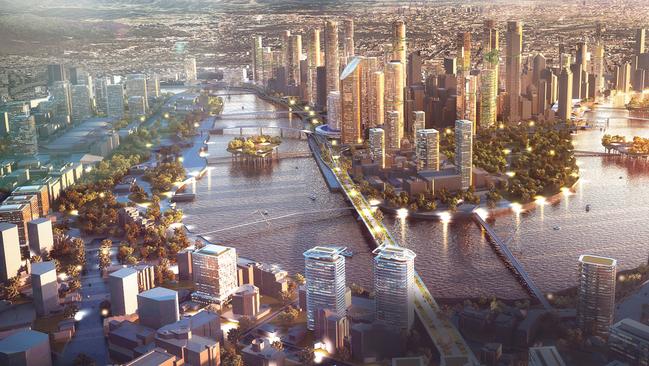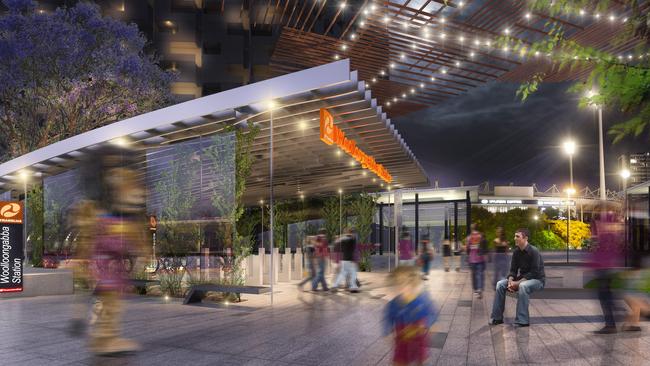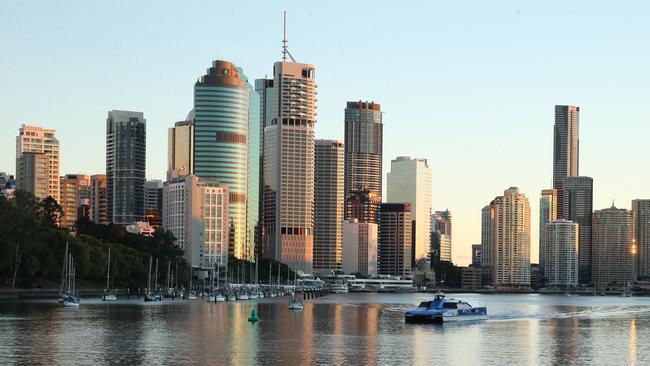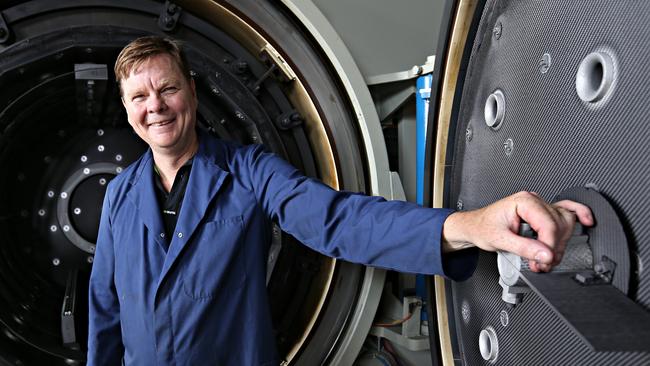Future Brisbane: Bernard Salt research shows how city is headed for greatness
BRISBANE is on the brink of becoming a major international centre underpinned by booming population growth and a “network of cities’’ unrivalled by any other Australian capital.
Future Brisbane
Don't miss out on the headlines from Future Brisbane. Followed categories will be added to My News.
- A big country town no more
- Diversity key to city’s growth
- Journey to the new world
- Housing is Brisbane’s best weapon
BRISBANE is on the brink of becoming a major international centre underpinned by booming population growth and a “network of cities’’ unrivalled by any other capital.
Leading demographer and social researcher Bernard Salt’s exclusive research for The Courier-Mail’s Future Brisbane campaign – launching today – says Queensland’s capital over the next decade will join Sydney and Melbourne as Australia’s global cities.
“Brisbane is following the same trajectory,” he said.
“It’s almost like the gang of three in terms of the cities that dominate. Here is a city of opportunity, here is a city of change and excitement.’’
The population of Greater Brisbane will soar by 662,000 people to 2.95 million by 2031, according to official forecasts. That’s like adding more than today’s Gold Coast population. Previous projections have seriously underestimated the pace of growth. Mr Salt found the population of Brisbane City rose 76 per cent faster than predicted in the decade to 2016.
Analysis by professional services firm PwC shows an extra 280,000 homes will need to be built in the region by 2031. And an additional 500,000 vehicles are expected on the roads, more than doubling congestion costs to $5.9 billion a year.
Mr Salt questioned whether Brisbane’s infrastructure planning was “ballsy enough” to cope with the predicted influx. He said the city had one crucial advantage over the southern centres as we seek to avoid “dystopian’’ crowding, housing unaffordability and congestion.
“Greater Brisbane is a network of cities as opposed to the dominance of a single metropolis,” he said.
“Sydney and Melbourne have a particular culture that is anchored in a different era in history.
“But Brisbane offers a different model. It’s a 21st century lifestyle.”
The key to maintaining that was to develop economic and employment hubs away from the city centre, as proposed by the State Government’s new regional plan in suburbs such as Chermside and Mr Gravatt as well as new mini-city communities in Ipswich, Logan and Moreton Bay.
“What we will see is the decentralisation of employment out of the CBD,” Mr Salt said. “I don’t think the millennial generation will commute vast distances to work.”

Brisbane already had many of the hallmarks of a bigger city which, together with climate and lifestyle, would make it attractive to a generation of increasingly mobile knowledge workers.
“You have a goat’s cheese curtain, as I call it – the hipster zone within a 5km radius (of the CBD),” he said.
“Every major city, every global city is evolving this distinction between that inner-city lifestyle and suburbia, and we’re seeing that very much emerge in Brisbane.’’
Multi-storey apartments now account for 37 per cent of all dwellings within 3km of the CBD – catching up on Sydney’s 50 per cent – with tens of thousands more planned.
Key developments including the Queens Wharf integrated casino-resort over the next decade would take the city to a new level, Mr Salt said.
“It is regarded as a requirement of a global city,” he said. “You need a place that symbolises or encapsulates sophistication and style. The increasing 24/7-ness of precincts in cities is a defining feature.’’

Cross River Rail and the Brisbane Metro public transport initiatives would increase fluidity in the city but Mr Salt said the city needed to look even further ahead.
“You need broad, gutsy, ballsy thinking around infrastructure,” he said. “Yes, Cross River Rail, but what is the next project beyond that? Sydney is talking about light rail to Parramatta to create a second CBD, Melbourne is talking about light rail to Monash-Chadstone – where is Brisbane’s version of that?”
The opening of Brisbane Airport’s second runway would supercharge the city’s connections to the world, especially China and Asia, bringing tourists, students, businesspeople and new residents.
Mr Salt predicts an increasing “Asianisation’’ of Greater Brisbane as those ties strengthen. Asian-born people currently make up 9 per cent of the population, but he expects that to double by the middle of the century.
The trend would see Brisbane would join the likes of Vancouver, San Francisco, Seattle and Auckland as a Pacific Rim player, with large Asian populations.
Family households will grow quicker than the rest of Australia, allowing Brisbane to position itself as the most ‘’family-friendly’’ capital.
The next 15 years will also bring a 52 per cent jump in the number of those aged 65-plus, with a boom in health and community care jobs, but also potential loneliness and isolation issues.
WHAT IMPROVEMENTS CAN BRISBANE MAKE IN THE FUTURE? HAVE YOUR SAY IN THE COMMENTS SECTION BELOW


